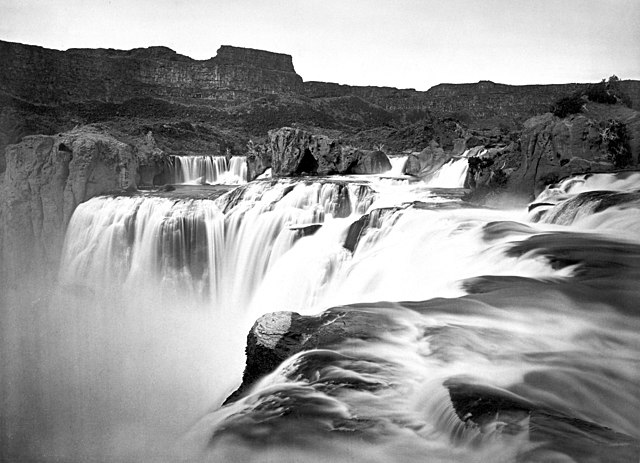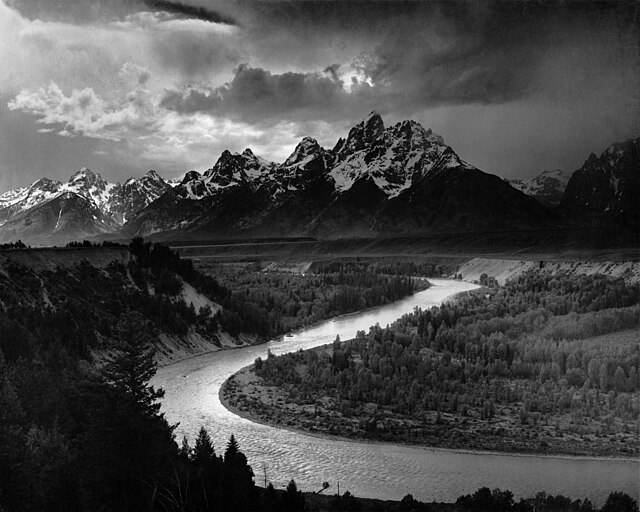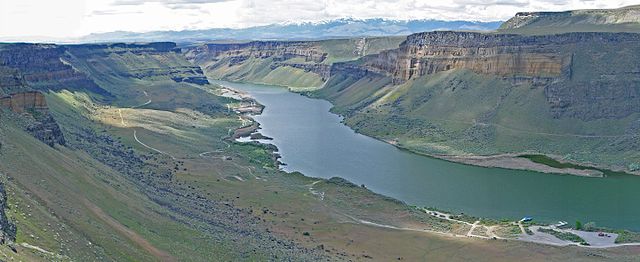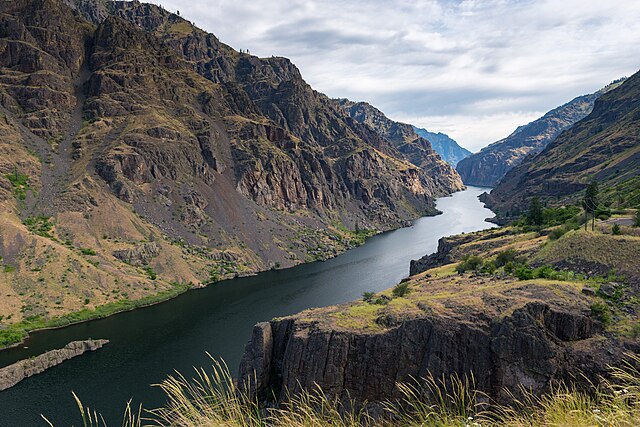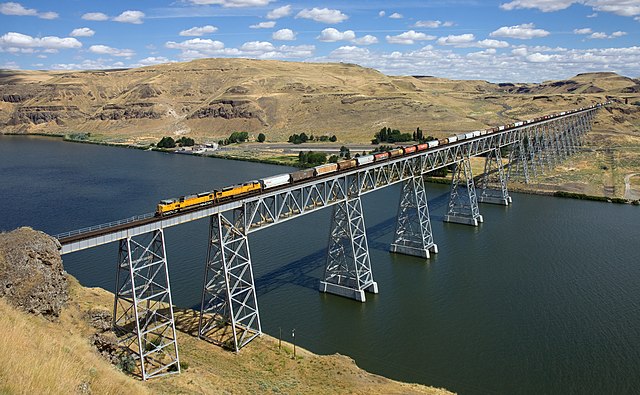Shoshone Falls is a waterfall in the western United States, on the Snake River in south-central Idaho, approximately three miles (5 km) northeast of the city of Twin Falls. Sometimes called the "Niagara of the West," Shoshone Falls is 212 feet (65 m) in height, 45 feet (14 m) higher than Niagara Falls, and flows over a rim nearly one thousand feet (300 m) in width.
Shoshone Falls in August 2018
Shoshone Falls Dam, located directly above the falls, diverts water for hydropower generation and can greatly reduce the flow of the falls in the dry season.
Shoshone Falls and the Snake River Canyon as it appeared before damming, photographed by Timothy H. O'Sullivan, circa 1874
Shoshone Falls on the Snake River by Thomas Moran, c. 1900
The Snake River is a major river in the interior Pacific Northwest region of the United States. About 1,080 miles (1,740 km) long, it is the largest tributary of the Columbia River, which is the largest North American river that empties into the Pacific Ocean. Beginning in Yellowstone National Park, western Wyoming, it flows across the arid Snake River Plain of southern Idaho, the rugged Hells Canyon on the borders of Idaho, Oregon and Washington, and finally the rolling Palouse Hills of southeast Washington. It joins the Columbia River just downstream from the Tri-Cities, Washington, in the southern Columbia Basin.
The Tetons and the Snake River (photographed by Ansel Adams, 1942), shows the Snake River in Jackson Hole, Wyoming
The Snake River flows through canyons in the Morley Nelson Snake River Birds of Prey National Conservation Area, south of Boise
The Snake River in Hells Canyon
The Union Pacific Railroad crosses the lower Snake River via the Joso Bridge near Starbuck, Washington.



